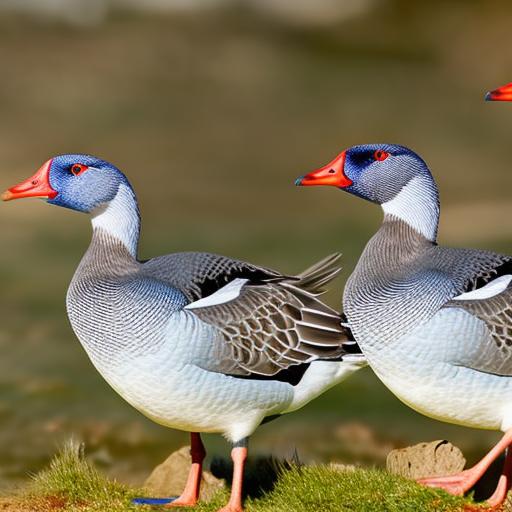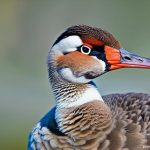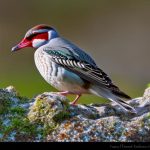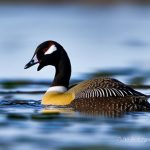Geese infestation is a common problem that many property owners face. These birds can cause significant damage to properties, including lawns, gardens, and buildings. They are attracted to areas with open spaces, water sources, and abundant food supply. Geese infestation can be a nuisance and can lead to health hazards for humans and pets. Therefore, it is crucial to implement effective geese control measures to keep these birds away from your property.
Key Takeaways
- Geese infestation is a common problem that can cause damage to property and pose health risks.
- Understanding geese behavior is important in developing effective control strategies.
- Keeping geese away is crucial to prevent damage and maintain a safe environment.
- Different types of flags can be used to repel geese, but choosing the right one for your property is key.
- Flagging can be an effective method for deterring geese, but it should be complemented with other control methods and legal considerations should be taken into account.
Understanding the behavior of geese
Geese are social birds that are known for their adaptability and intelligence. They are attracted to areas with open spaces, such as parks, golf courses, and residential properties with large lawns. Geese are also drawn to areas with water sources, such as ponds or lakes, as they provide a habitat for them to swim and feed. Additionally, geese are herbivores and feed on grass, plants, and crops.
Deterring geese can be challenging due to their adaptability. They can quickly learn to avoid certain areas or adapt their behavior to overcome deterrents. For example, if a property owner installs scare devices or noise makers, geese may become accustomed to these stimuli over time and no longer be deterred by them. Therefore, it is essential to use effective geese control methods that can consistently keep these birds away from your property.
The importance of keeping geese away
Geese can cause significant damage to properties if left unchecked. They have a voracious appetite and can quickly consume large amounts of grass and plants in a short period. This can lead to the destruction of lawns, gardens, and landscaping features. Additionally, their droppings can create unsightly messes on walkways, driveways, and other outdoor areas.
Furthermore, geese droppings can pose health hazards for humans and pets. The droppings contain bacteria and parasites that can contaminate the soil and water sources. This can lead to the spread of diseases, such as E. coli and salmonella. In areas where geese congregate, the risk of exposure to these pathogens increases significantly. Therefore, it is crucial to keep geese away from your property to maintain a safe and clean environment.
Types of flags that repel geese
One effective method of deterring geese from your property is the use of flags. There are different types of flags that have been proven to repel geese effectively. One type is predator flags, which mimic the presence of natural predators, such as owls or hawks. These flags have large, colorful eyespots that resemble the eyes of predators. When geese see these flags, they perceive them as a threat and are more likely to avoid the area.
Another type of flag that repels geese is reflective flags. These flags have reflective surfaces that create flashes of light when they move in the wind. Geese are startled by these flashes of light and are deterred from landing or staying in the area. Reflective flags are particularly effective in open spaces, such as lawns or golf courses, where geese tend to congregate.
How to choose the right flag for your property
When choosing a flag to repel geese from your property, there are several factors to consider. First, you should consider the size of your property and the specific areas where geese tend to congregate. If you have a large lawn or open space, predator flags may be more effective as they mimic the presence of natural predators. On the other hand, if you have a smaller area or want to deter geese from specific spots, reflective flags may be more suitable.
Additionally, you should consider the location of your property and the surrounding environment. If your property is located near water sources, such as ponds or lakes, geese may be more attracted to it. In this case, using a combination of predator and reflective flags may be more effective in deterring geese. It is also important to regularly move the flags around to prevent geese from becoming accustomed to their presence.
The effectiveness of flagging in deterring geese
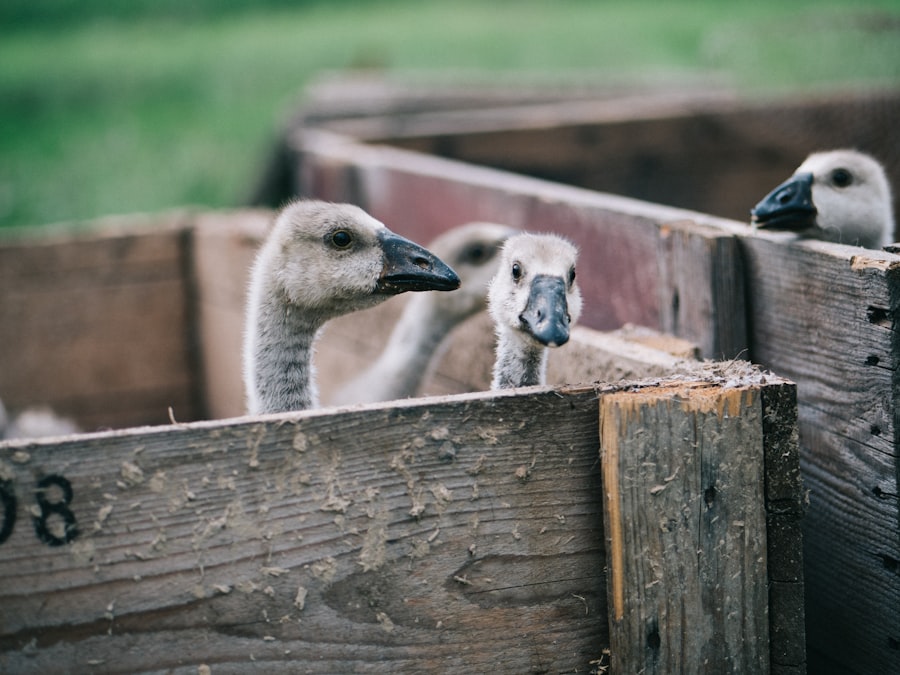
Studies and real-life examples have shown that flagging is an effective method of deterring geese from properties. In a study conducted by the University of Nebraska-Lincoln, it was found that the use of predator flags reduced the number of geese on treated lawns by 80%. The study also found that the use of reflective flags reduced the number of geese by 60%.
Real-life examples have also demonstrated the effectiveness of flagging in deterring geese. For example, a golf course in New York implemented a flagging program and saw a significant decrease in the number of geese on their property. The flags were strategically placed around the course, and the geese were deterred from landing or staying in those areas.
Flagging is a humane and eco-friendly method of geese control. Unlike other methods, such as trapping or shooting, flagging does not harm or kill the birds. It simply creates a visual deterrent that makes geese feel unsafe or uncomfortable in the area. Additionally, flagging does not pose any risks to other wildlife or the environment.
Tips for installing and maintaining flags
To ensure optimal effectiveness, it is important to install and maintain flags properly. When installing predator flags, it is recommended to place them at eye level for geese, which is around 2-3 feet above ground level. This will make them more visible to the birds and increase their effectiveness as a deterrent.
Reflective flags should be installed in areas where they can catch the sunlight and create flashes of light. It is also important to regularly move the flags around to prevent geese from becoming accustomed to their presence. This can be done by periodically changing the location of the flags or by using a rotating system where different flags are used at different times.
Regular maintenance is also crucial to ensure the longevity of the flags. Flags should be checked regularly for any damage or wear and tear. If a flag becomes damaged or faded, it should be replaced immediately to maintain its effectiveness. Additionally, flags should be cleaned regularly to remove any dirt or debris that may accumulate on them.
Other methods to complement flagging for geese control
While flagging is an effective method of geese control, it can be beneficial to use other methods in conjunction with flagging for maximum effectiveness. One method that can complement flagging is the use of sound deterrents. These devices emit loud noises or predator calls that scare geese away. Sound deterrents can be particularly effective in areas where geese have become accustomed to visual deterrents, such as flags.
Physical barriers can also be used in conjunction with flagging to keep geese away from specific areas. Fencing or netting can be installed around ponds or other water sources to prevent geese from accessing them. Additionally, planting tall grasses or shrubs around open spaces can create a physical barrier that makes it difficult for geese to land or stay in those areas.
Legal considerations when using flags to deter geese
When using flags to deter geese from your property, it is important to be aware of any legal considerations. Some local regulations may restrict the use of certain types of flags or require permits for their installation. It is important to research and comply with these regulations to avoid any legal issues.
Additionally, it is important to consider the potential impact on other wildlife when using flags as a deterrent. Flags should not be installed in areas where they may pose risks to other bird species or wildlife. It is important to strike a balance between deterring geese and maintaining a healthy ecosystem.
Conclusion and final recommendations for geese management
Geese infestation can be a significant problem for property owners, causing damage to landscaping and posing health hazards. Implementing effective geese control measures is crucial to keep these birds away from your property. Flagging is an effective and humane method of geese control that has been proven to be successful in deterring geese.
When choosing flags for your property, consider the size and location of the area, as well as the specific needs of your property. It is also important to regularly maintain the flags to ensure their effectiveness. Additionally, using other methods, such as sound deterrents or physical barriers, can complement flagging for maximum effectiveness.
It is important to be aware of any legal considerations when using flags to deter geese and to ensure compliance with relevant regulations. By taking action and implementing effective geese control measures, property owners can maintain a safe and clean environment free from geese infestation.
If you’re looking for effective ways to keep geese away, you might also be interested in learning about the benefits of using flags as a deterrent. Flags can be a simple yet effective method to deter geese from your property. They create movement and noise, which can make geese feel uncomfortable and discourage them from settling in your area. To learn more about how flags can help keep geese away, check out this informative article on Poultry Wizard: Using Flags to Deter Geese.
Meet Walter, the feathered-friend fanatic of Florida! Nestled in the sunshine state, Walter struts through life with his feathered companions, clucking his way to happiness. With a coop that’s fancier than a five-star hotel, he’s the Don Juan of the chicken world. When he’s not teaching his hens to do the cha-cha, you’ll find him in a heated debate with his prized rooster, Sir Clucks-a-Lot. Walter’s poultry passion is no yolk; he’s the sunny-side-up guy you never knew you needed in your flock of friends!

